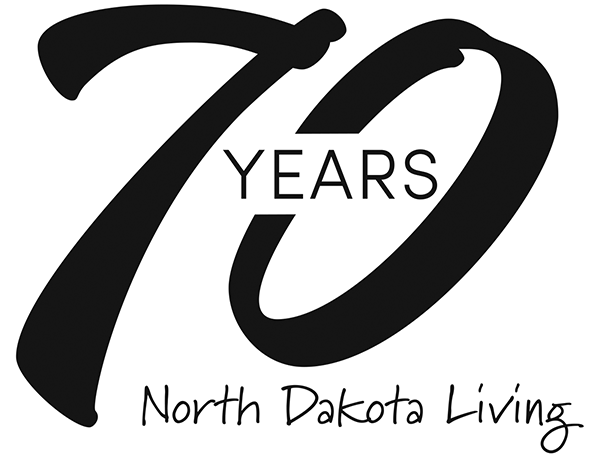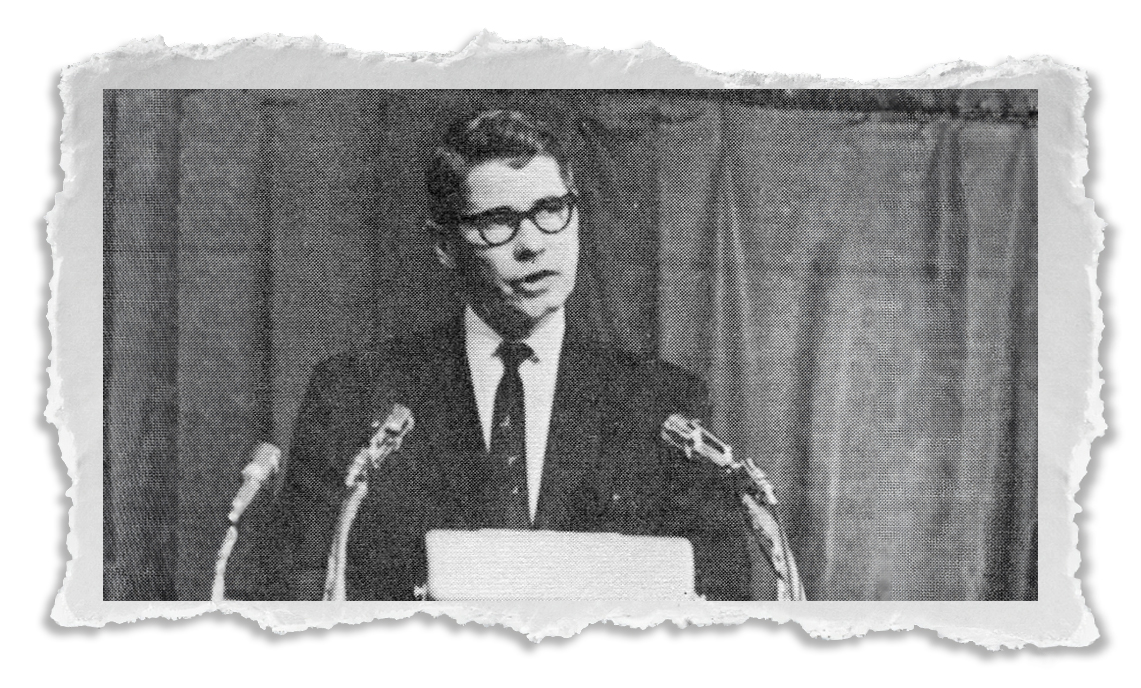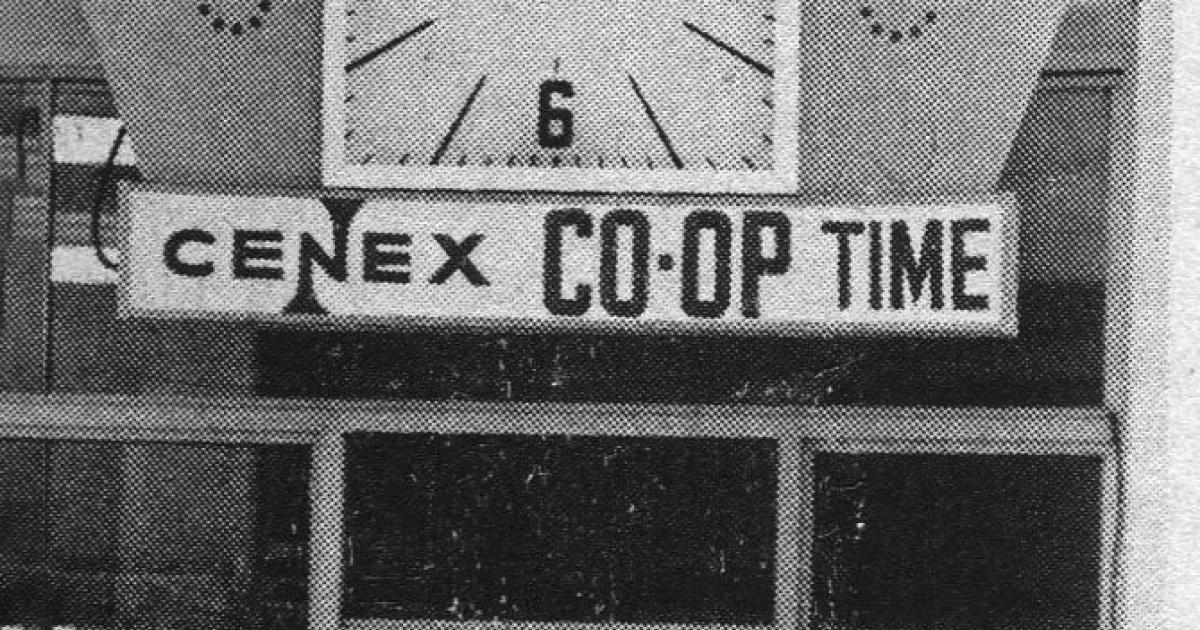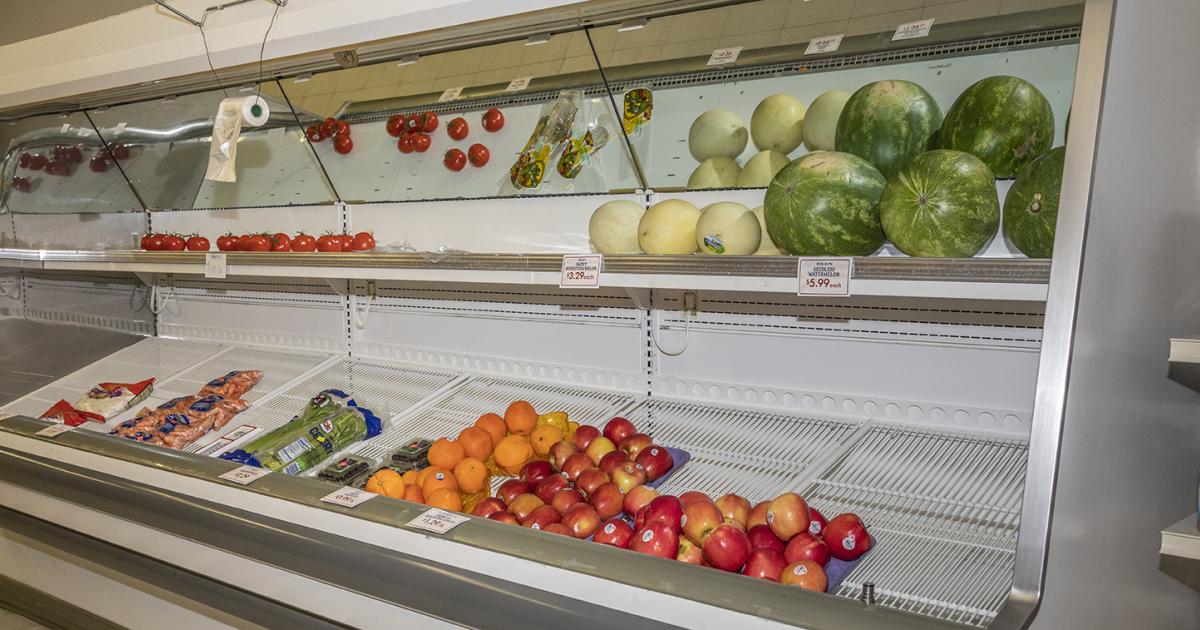This sketch, which appeared in the October 1983 issue of North Dakota Living, then the ND REC Magazine, illustrates the broad range of services provided by cooperatives. Alongside the sketch, the magazine encouraged readers 30 years ago to: “Look around you. Count the cooperatives. See what’s cooking with these thriving businesses that are working hard to provide goods and services and jobs that benefit not only their communities, but all of America.” This Co-op Month, why not do the same?
 There is a rich cooperative history in North Dakota, and North Dakota Living has championed cooperatives of all kinds throughout its 70-year history.
There is a rich cooperative history in North Dakota, and North Dakota Living has championed cooperatives of all kinds throughout its 70-year history.
North Dakota Living has been the official publication of North Dakota’s electric cooperatives for 70 years. It has been the state’s unofficial publication of cooperatives for 70 years, too.
Our state’s early cooperative history tells a similar tale – neighbors helping neighbors, people working together, human needs being met through homegrown, cooperative enterprise. The cooperative model has brought electric, telephone and broadband service to remote and rural places. It has brought housing, food, child care and health care to small towns. It has provided insurance, farm credit, farm marketing and farm supply to ag producers. It has helped establish credit unions and provided job opportunities in communities across the state.
As cooperatives of all kinds celebrate Co-op Month in October, enjoy these nuggets of cooperative history, which have been carefully preserved and printed in the pages of North Dakota Living.
Cally Peterson is editor of North Dakota Living. She can be reached at cpeterson@ndarec.com.

PROCLAMATIONS
Many North Dakota governors have proclaimed October as “Co-op Month,” since U.S. Secretary of Agriculture Orville Freeman first declared its national observance in 1964. In his October 1965 proclamation declaring “Co-op Month,” Gov. William Guy said:
In his October 1965 proclamation declaring “Co-op Month,” Gov. William Guy said:
“As a farmer, and as governor of a great agricultural state, I am proud to salute our fine system of cooperative free enterprise.
Throughout the nation, and especially in North Dakota, producers of feed and fiber have joined together to provide marketing and supply services, which help to stabilize their income in a fluctuating economy. Their achievement is not only a remarkable example of self-help; it is a major contribution to the economic health of the whole community.
Farm cooperatives have supplied a needed element of competition; a yardstick for price and quality, which has improved services for everyone. They have kept purchasing power in the rural community where it is needed. They have helped to keep families on the land, to provide employment in our towns and cities, to maintain business and professional services, and to provide schools and churches.
Vigorous, democratic cooperatives are a vital part of America’s agricultural greatness, which is a cornerstone of our prosperity at home and our power in the world.”

ORVILLE FREEMAN
Co-op Month has been a nationally recognized celebration since 1964, when U.S. Secretary of Agriculture Orville Freeman, a former Minnesota governor, proclaimed October as Co-op Month.
North Dakota Living, then the North Dakota Rural Electric Magazine, was acquainted with Freeman, who wrote a piece for the magazine in May 1963, titled, “The untold story of American agriculture.”
Freeman criticized the underreporting of the success stories in agriculture and dramatic changes happening in rural America. He also lauded the achievements of local electric cooperatives in rural area development.
“We are delighted with the initiative local rural electric cooperatives are taking in some important aspects of rural development. Since July 1, 1961, local electric cooperatives have helped launch or expand more than 400 industries and businesses, and these businesses are expected to generate more than 50,000 new jobs in rural areas.”
Freeman also tipped his hat to publications like North Dakota Living.
“I congratulate the editors of the nation’s rural electric publications for their conscientious and effective efforts to tell the great story of American farm family agriculture. Even greater and more dramatic stories of progress in rural America are in the making and must be told. In all likelihood, they will be reported first and best by such publications as yours,” he said.












